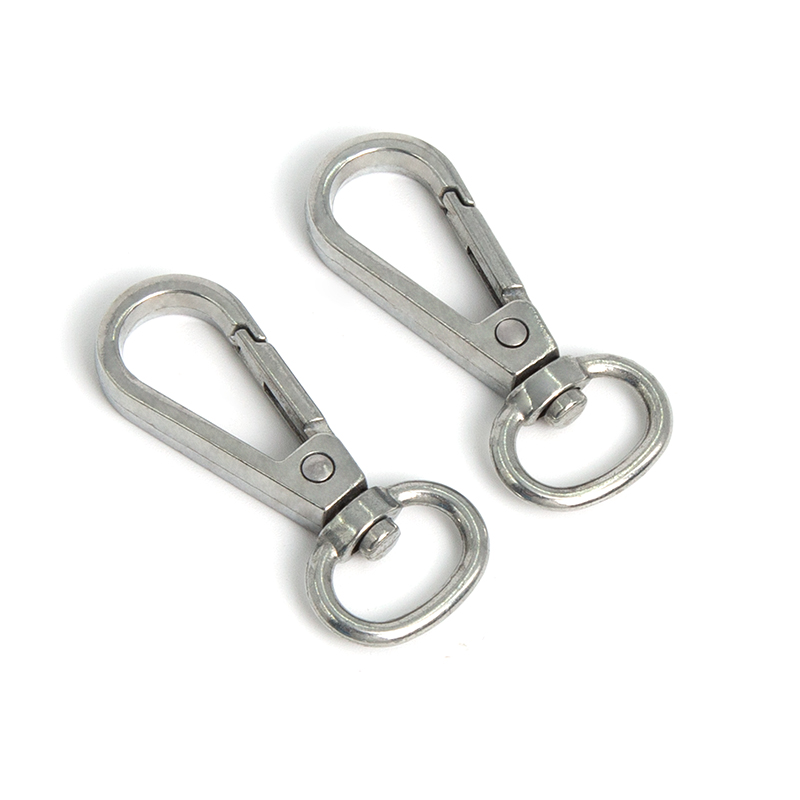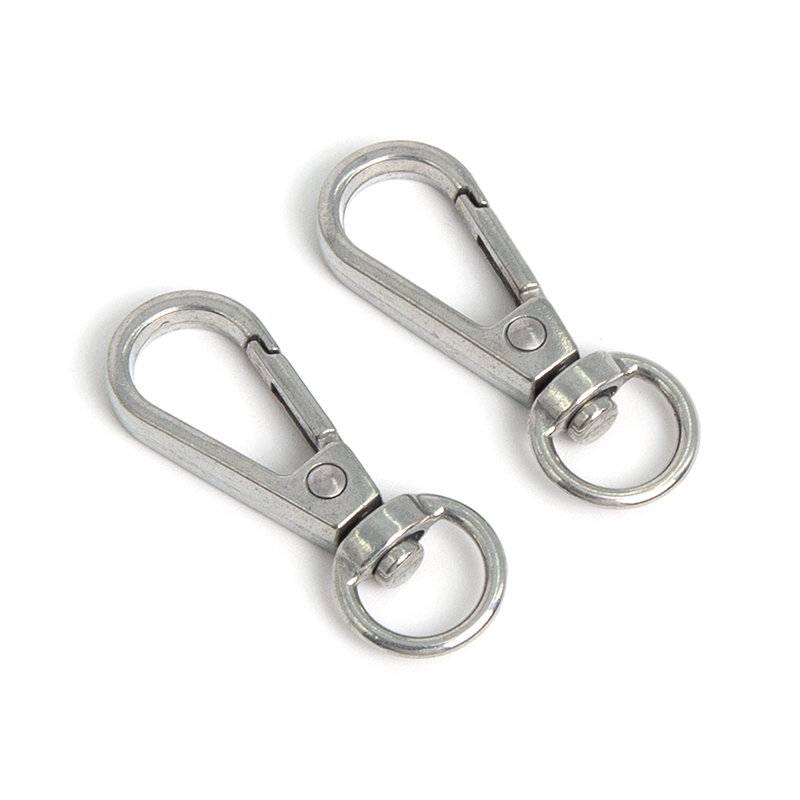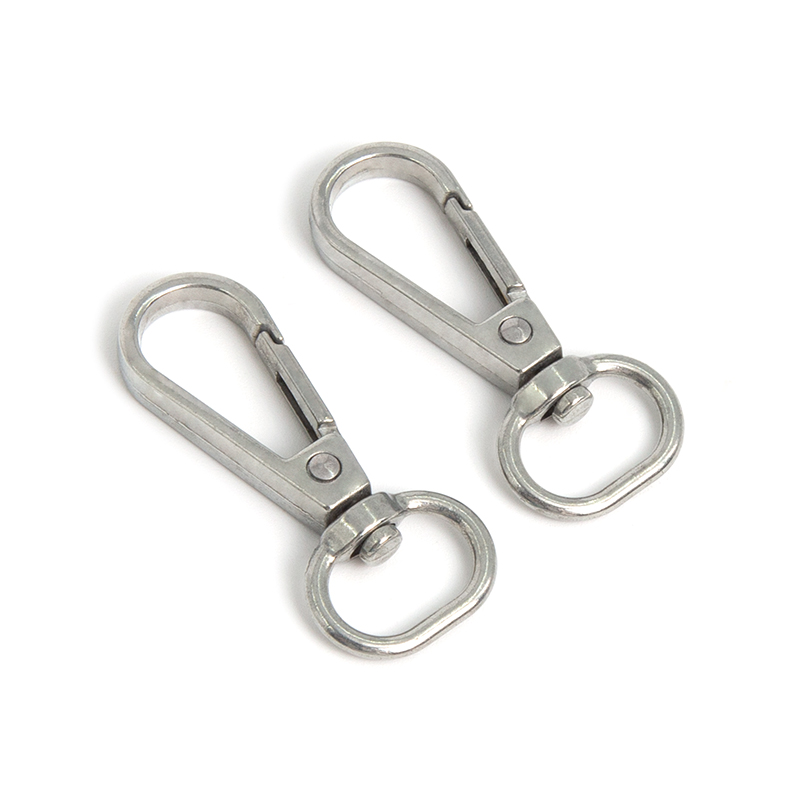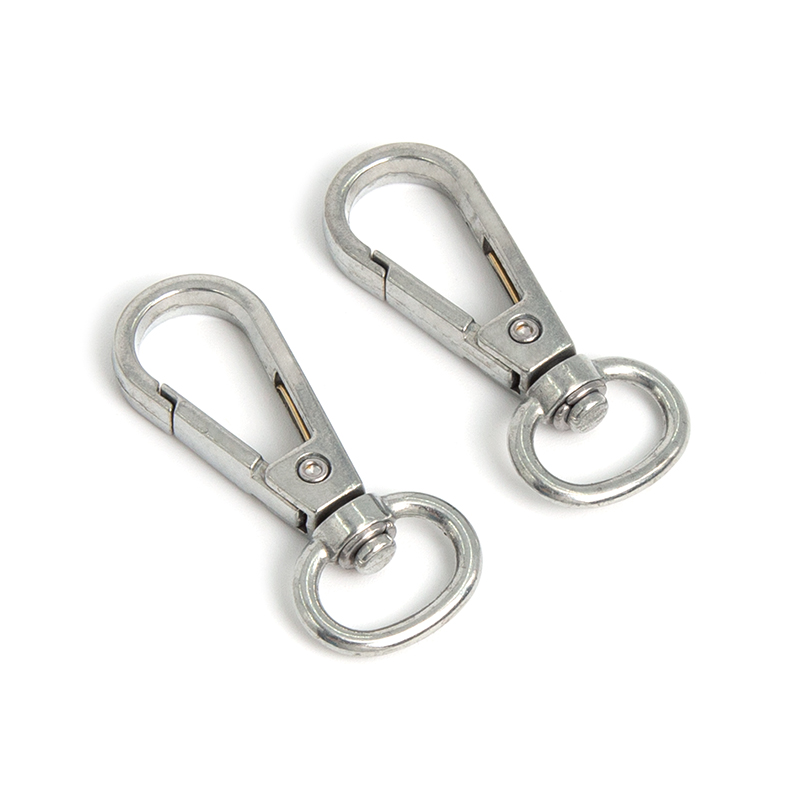Can zinc alloy die-cast metal accessories for bags guarantee long-term durability, preventing breakage, deformation, or peeling?
Release Time : 2025-10-03
In the design and manufacturing of bags, bag accessories, though small, play a crucial role in both functionality and aesthetics. From zipper pulls and buckles to clasps, D-rings, and decorative nameplates, these seemingly insignificant components directly impact the user experience, durability, and overall quality of the bag. Zinc alloy die-casting is a preferred method for producing bag accessories for mid-to-high-end brands, thanks to its superior structural stability and long lifespan. The ability of these metal components to withstand prolonged and frequent use without breaking, deforming, or peeling is a key indicator of their quality, and the answer is undoubtedly yes—high-quality zinc alloy die-cast metal accessories, with their material properties and advanced manufacturing process, can easily meet these rigorous requirements.
Zinc alloy itself possesses excellent mechanical properties, with compressive strength, hardness, and wear resistance far exceeding those of ordinary plastics or low-grade iron. Through high-pressure die-casting, molten zinc alloy is injected into a precision mold under thousands of tons of pressure, rapidly cooling and forming. This process not only creates a denser metal structure, effectively avoiding common defects like pores and voids found in traditional casting, but also ensures uniformity and integrity in the microstructure. This high-density metal structure provides exceptional impact resistance; even with frequent opening and closing, pulling, dropping, or external pressure, the metal parts maintain their original shape, avoiding bending, twisting, or structural fractures. For example, backpack adjustment buckles, suitcase lock latches, or handbag clasps experience repeated stress cycles during daily use. Zinc alloy die-cast components, with their inherent strength, can withstand tens of thousands of opening and closing tests without fatigue cracks or functional failure, demonstrating durability far superior to ordinary materials.
In terms of resistance to deformation, zinc alloy also exhibits excellent thermal stability and dimensional stability. Many low-cost metal components are prone to slight deformation due to material softening under high temperatures (such as prolonged exposure to heat in a car during summer), leading to loose connections or poor functionality. Zinc alloy, however, has a high melting point and a low coefficient of thermal expansion at room and moderate temperatures, maintaining stable geometric accuracy across various climates. Whether in the harsh winter of the north or the scorching summer of the south, zinc alloy die-cast components maintain their original dimensional tolerances, ensuring reliable performance. Furthermore, the die-casting process itself boasts extremely high dimensional accuracy, with tolerances controlled to the micrometer level. This means that each component's shape, hole placement, and interfaces are highly consistent, ensuring even stress distribution after installation and further reducing the risk of deformation due to localized stress concentration.
Regarding the issue of "peeling," this primarily involves the surface treatment process of the metal components. Many bag hardware components undergo electroplating, spraying, or PVD vacuum coating on the zinc alloy base material to enhance aesthetics and corrosion resistance. Poor-quality products often suffer from peeling, blistering, or fading due to inadequate pretreatment or poor coating adhesion. High-quality zinc alloy die-cast hardware, however, strictly controls every stage of production: from mold cleaning and die casting to deburring, polishing, and multi-layer electroplating (such as a copper-nickel-chromium system) or environmentally friendly PVD coating. Each step is precisely controlled. The PVD process, in particular, achieves a strong bond between the coating and the substrate at the atomic level. The resulting metal film is not only vibrant in color and wear-resistant, but also effectively resists corrosion from sweat, rain, cosmetics, and other daily corrosive agents, ensuring a like-new appearance and no peeling or oxidation even after long-term use.
Even more noteworthy, the zinc alloy die-casting process allows for the one-piece molding of complex structures, eliminating weak points caused by welding or joining, and preventing overall failure due to loose or broken connections. Furthermore, its excellent machinability allows manufacturers to optimize structural design while maintaining strength, such as adding reinforcing ribs or optimizing stress-bearing curves, further enhancing its resistance to deformation. In summary, high-quality die-cast zinc alloy hardware for handbags, with its dense metal structure, advanced manufacturing processes, and reliable surface finishing techniques, can effectively withstand the risks of breakage, deformation, and peeling during long-term use. It not only ensures the functionality of the handbag but also represents the brand's quality and builds customer trust. For handbag manufacturers seeking durability and high-end quality, choosing die-cast zinc alloy hardware is a solid commitment that stands the test of time.
Zinc alloy itself possesses excellent mechanical properties, with compressive strength, hardness, and wear resistance far exceeding those of ordinary plastics or low-grade iron. Through high-pressure die-casting, molten zinc alloy is injected into a precision mold under thousands of tons of pressure, rapidly cooling and forming. This process not only creates a denser metal structure, effectively avoiding common defects like pores and voids found in traditional casting, but also ensures uniformity and integrity in the microstructure. This high-density metal structure provides exceptional impact resistance; even with frequent opening and closing, pulling, dropping, or external pressure, the metal parts maintain their original shape, avoiding bending, twisting, or structural fractures. For example, backpack adjustment buckles, suitcase lock latches, or handbag clasps experience repeated stress cycles during daily use. Zinc alloy die-cast components, with their inherent strength, can withstand tens of thousands of opening and closing tests without fatigue cracks or functional failure, demonstrating durability far superior to ordinary materials.
In terms of resistance to deformation, zinc alloy also exhibits excellent thermal stability and dimensional stability. Many low-cost metal components are prone to slight deformation due to material softening under high temperatures (such as prolonged exposure to heat in a car during summer), leading to loose connections or poor functionality. Zinc alloy, however, has a high melting point and a low coefficient of thermal expansion at room and moderate temperatures, maintaining stable geometric accuracy across various climates. Whether in the harsh winter of the north or the scorching summer of the south, zinc alloy die-cast components maintain their original dimensional tolerances, ensuring reliable performance. Furthermore, the die-casting process itself boasts extremely high dimensional accuracy, with tolerances controlled to the micrometer level. This means that each component's shape, hole placement, and interfaces are highly consistent, ensuring even stress distribution after installation and further reducing the risk of deformation due to localized stress concentration.
Regarding the issue of "peeling," this primarily involves the surface treatment process of the metal components. Many bag hardware components undergo electroplating, spraying, or PVD vacuum coating on the zinc alloy base material to enhance aesthetics and corrosion resistance. Poor-quality products often suffer from peeling, blistering, or fading due to inadequate pretreatment or poor coating adhesion. High-quality zinc alloy die-cast hardware, however, strictly controls every stage of production: from mold cleaning and die casting to deburring, polishing, and multi-layer electroplating (such as a copper-nickel-chromium system) or environmentally friendly PVD coating. Each step is precisely controlled. The PVD process, in particular, achieves a strong bond between the coating and the substrate at the atomic level. The resulting metal film is not only vibrant in color and wear-resistant, but also effectively resists corrosion from sweat, rain, cosmetics, and other daily corrosive agents, ensuring a like-new appearance and no peeling or oxidation even after long-term use.
Even more noteworthy, the zinc alloy die-casting process allows for the one-piece molding of complex structures, eliminating weak points caused by welding or joining, and preventing overall failure due to loose or broken connections. Furthermore, its excellent machinability allows manufacturers to optimize structural design while maintaining strength, such as adding reinforcing ribs or optimizing stress-bearing curves, further enhancing its resistance to deformation. In summary, high-quality die-cast zinc alloy hardware for handbags, with its dense metal structure, advanced manufacturing processes, and reliable surface finishing techniques, can effectively withstand the risks of breakage, deformation, and peeling during long-term use. It not only ensures the functionality of the handbag but also represents the brand's quality and builds customer trust. For handbag manufacturers seeking durability and high-end quality, choosing die-cast zinc alloy hardware is a solid commitment that stands the test of time.







